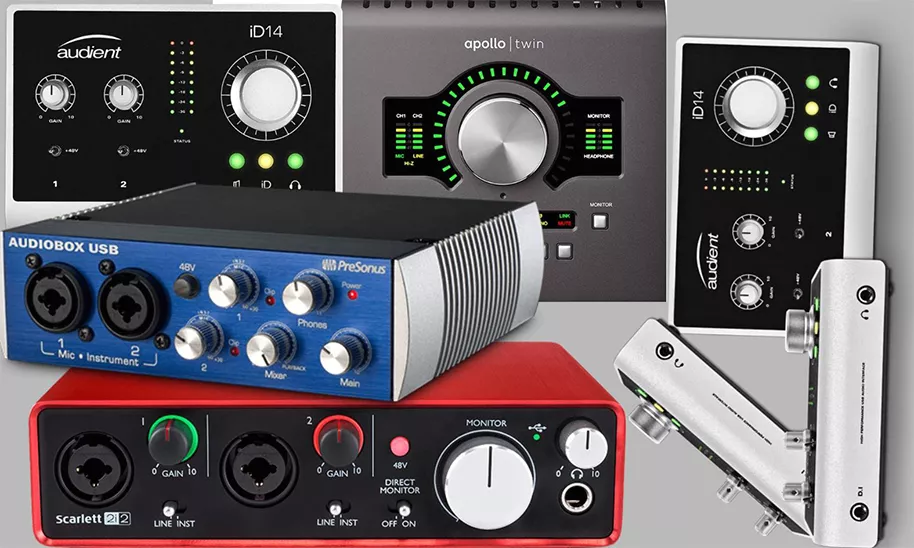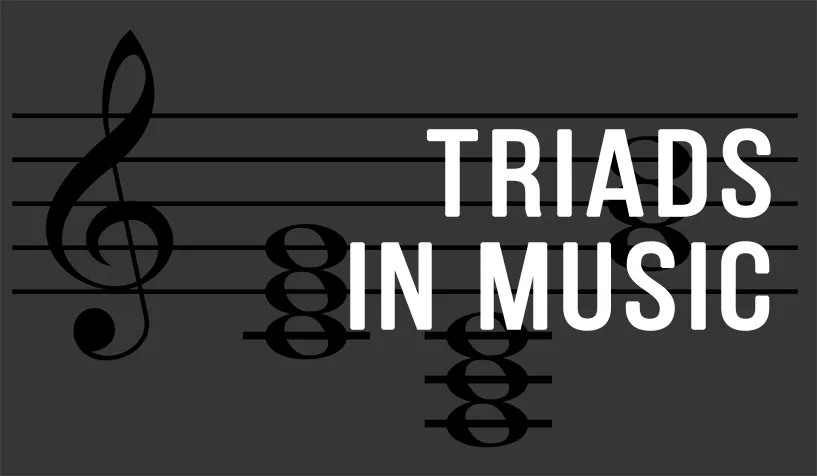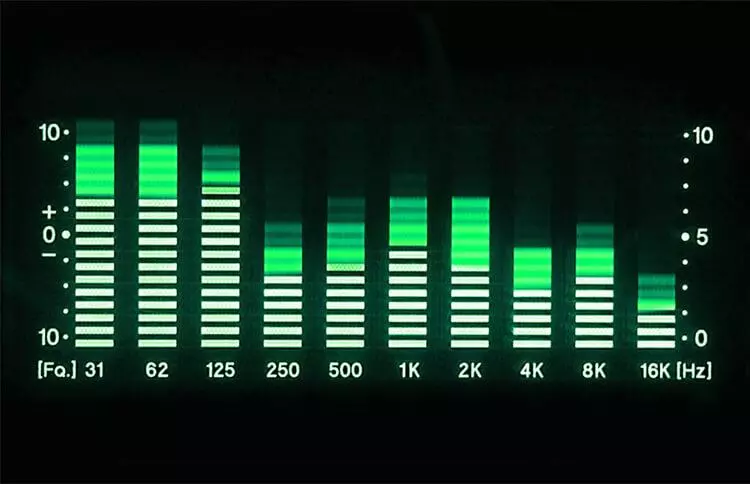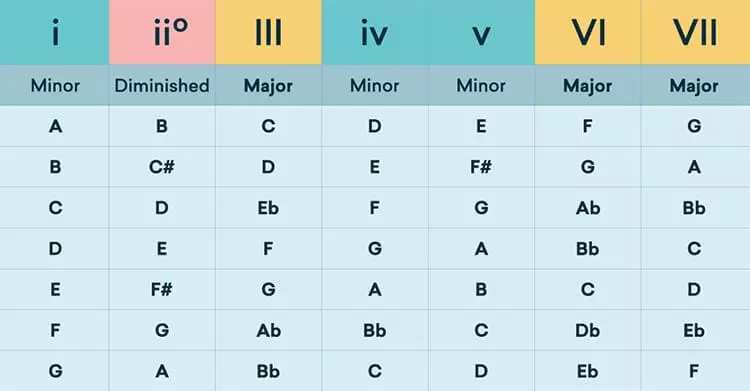How do speakers work
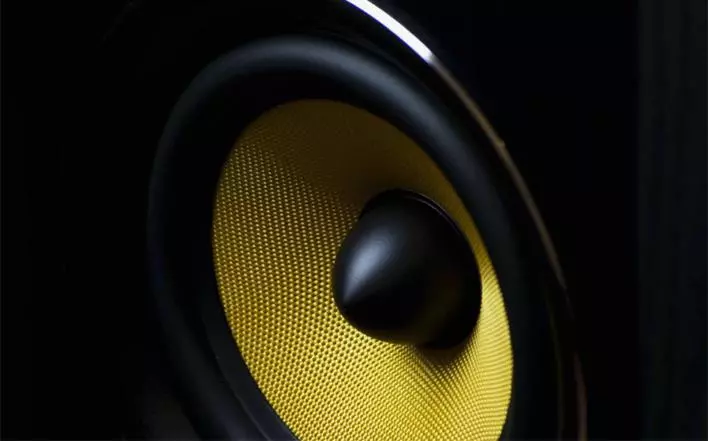
Even though Hi-Fi speakers have been around for over 70 years, to many newcomers in the audio world, these wooden boxes with various components and openings might seem mysterious. That’s why we’ve put together this article for those just starting their journey into the world of high-quality sound.
It’s important to understand that, despite decades of technological advancements in design and manufacturing, the fundamental principle behind how speakers—or acoustic transducers—work has barely changed since Edward Kellogg and Chester Rice first introduced it in 1925. Whether we’re talking about the tiny speakers in your smartphone, the soundbar under your TV, or the massive speakers at a concert, they all share the same basic design.
The evolution of Hi-Fi systems has brought us incredible sound quality, but understanding the basic principles behind speaker technology will help you make more informed decisions when building your own audio system.
How does a speaker work?
Before diving into the details of how speaker components work, let’s take a moment to understand how speakers create sound in general. The amplified audio signal is sent to a metal coil made of wire. As the electric current flows through the coil, it interacts with a magnet inside the speaker, causing the diaphragm to vibrate.
These vibrations move the air, creating sound waves that are an exact replica of the original audio signal. And just like that, you hear the sound—whether it’s music or someone’s voice. Of course, this is a simplified explanation, but now that we have a basic understanding, let’s break it down further.
The speaker, or sound transducer, is the key component of any speaker system, allowing us to hear audio. Its job is to convert the electrical signal from the amplifier into acoustic sound waves that travel through the air and reach our ears.

To connect to the amplifier, the speaker has two terminals linked to a voice coil hidden inside the speaker. This coil sits in a narrow gap between the poles of a permanent magnet located at the back of the speaker. When alternating current (the electric audio signal) flows through the coil, it moves back and forth—following the principles of electromagnetism that we all learned in school.
Since the coil is attached to the diaphragm, which is the part you can see on the front of the speaker, the diaphragm (or cone) also moves back and forth. These movements generate the sound waves that we perceive as sound. To allow the diaphragm to move freely, it’s mounted on a flexible surround. The larger the amplitude of the diaphragm’s movement, the louder the sound we hear.
What’s inside a speaker?
Let’s take a look inside a speaker and break down how each part plays a role in creating sound.
Speaker
The main job of a speaker is to convert an electrical signal into sound waves. It’s essentially the “engine” that drives sound production.
The key components of a speaker include:
- Pole;
- Backplate;
- Magnet;
- Top plate;
- Voice coil;
- Basket;
- Spider;
- Cone and surround;
- Dust cap.
Pole, Backplate, and Top Plate
The pole acts like a conductor, coordinating the entire magnetic system of the speaker. It sits at the center and directs the magnetic field. The backplate is located behind the pole, while the top plate is positioned directly above it.
Magnet
The magnet provides a constant source of magnetic energy in the speaker, surrounded by the pole and plates that help focus the magnetic field. It’s fixed to the basket of the speaker and is referred to as a permanent magnet because it retains its magnetic properties indefinitely. On the other hand, the voice coil, which interacts with the magnet, only becomes magnetic when an electric current passes through it.
Voice Coil
The voice coil is a wire tightly wound around a small cylinder, sometimes called a bobbin. Think of it like a yo-yo. When an electrical signal passes through the coil, it becomes an electromagnet, interacting with the permanent magnet in the speaker. If you remember your physics lessons, you’ll know that like charges repel and opposite charges attract. This magnetic interaction causes the coil to move back and forth, ultimately creating sound waves.
Spider and Surround
The spider is a corrugated material that supports the voice coil, keeping it in place while allowing it to move strictly forward and backward. Though it might seem counterintuitive, the spider ensures that the coil doesn’t shift sideways, maintaining stable motion.
The surround serves a similar purpose for the cone. It holds the cone in place at the top of the speaker basket, allowing it to move smoothly while producing sound.
Cone
The cone, also known as the diaphragm, is one of the few visible parts of the speaker. It moves back and forth in response to magnetic impulses from the voice coil. This motion creates pressure waves in the surrounding air, producing the sounds we hear.
Dust Cap
The dust cap is a small component that protects the internal parts of the speaker from dust and debris, preventing potential damage.
Basket
The basket is the frame that holds all the speaker components together. As the name suggests, it acts like a basket, gathering all the parts into a unified structure.
That’s how a speaker works. However, when we talk about “speakers,” we’re usually referring to the entire system, not just the internal components. But what else is needed to ensure speakers work effectively?
Electrical Components
To get the voice coil to produce sound, it needs an electrical signal. This is where speaker terminals and braided wires come into play. The terminals are the metal connection points or ports where the audio cable connects to the speaker.
These terminals link to the braided wire that feeds the voice coil, providing the necessary “fuel” to power it. This wire is responsible for transmitting the electrical signal that gets converted into sound.
Enclosure
The enclosure, or the speaker “cabinet,” plays a crucial role in how the speaker functions. First, it provides a sealed housing that protects the internal components from dust, dirt, and external elements like pet hair.
Secondly, the enclosure helps reduce phase distortion. When the speaker’s diaphragm moves, it produces sound waves in both directions. Without the enclosure, these waves could cancel each other out, resulting in poor sound quality.
Finally, the enclosure affects sound direction and bass tuning. A well-designed cabinet can help direct the sound where it’s needed and enhance the perception of low frequencies.
The enclosure is typically made from dense, rigid material to prevent unwanted resonance and vibration. The most common materials are wood or MDF (medium-density fiberboard), though plastic is also sometimes used.
How Do Speakers Reproduce Different Frequencies?
We’ve already covered how speakers convert electrical energy into sound waves. However, not all sound frequencies are the same, and if a single speaker tries to handle the entire spectrum of sound, the quality will suffer.
That’s why at concerts, you’ll often see massive stacks of audio systems. Each speaker is designed to handle a specific frequency range: subwoofers and woofers manage the low frequencies, midrange drivers cover the midrange, and small tweeters take care of the high frequencies. These speakers are built differently to handle these distinct ranges.
Of course, most people don’t want to fill their studio or living room with a large stack of speakers and separate drivers for each frequency. This is where multi-driver speakers come in.
Multi-Driver Speakers
Multi-driver speakers use two, three, or even four different-sized drivers to handle various frequencies. The most common type is the two-driver speaker, often called a two-way system.
Inside a two-way speaker, there’s a crossover—a special component that splits the audio signal into different frequency ranges. The high frequencies are sent to the tweeter, while the midrange and low frequencies are directed to the woofer, using filters to divide the frequencies appropriately.
By using a crossover, the speaker can reproduce the full range of sound with a level of quality that would be impossible with just a single driver.
Tweeters and woofers
If you’ve noticed, most Hi-Fi speakers have multiple drivers of different sizes on the front panel. But why is that? While in theory, a single driver can reproduce the full range of audio frequencies, there are practical limitations to this approach.
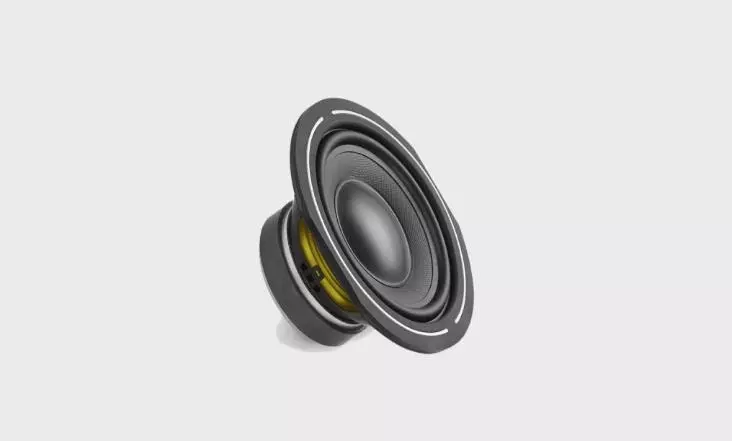
Tweeters and woofers
A small driver can’t move enough air to produce low frequencies at an adequate volume. On the flip side, larger drivers, which handle bass well, have mechanical limitations that prevent them from efficiently reproducing high frequencies. Another important characteristic of drivers is directivity, which refers to the angle within which the sound is properly balanced. The directivity of a driver depends on its size: larger drivers have narrower directivity at high frequencies, while smaller ones struggle with low frequencies.
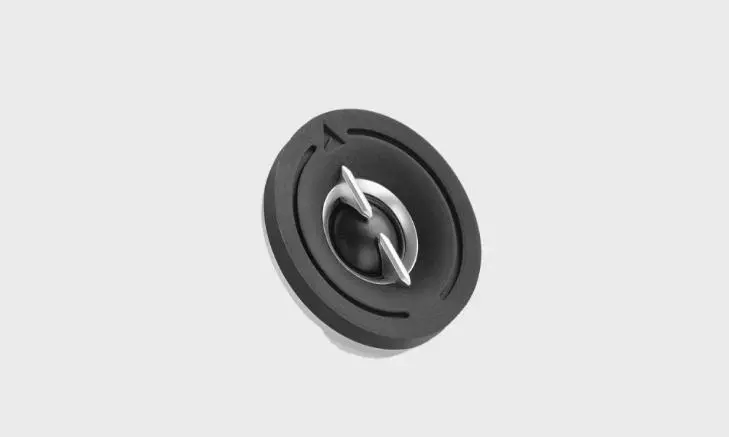
High frequency speaker
To achieve high-quality, balanced sound across all frequencies, speakers use multiple drivers of different sizes. Each driver is specifically designed to handle a particular frequency range—low, mid, or high. To ensure each driver receives only the frequencies it’s designed for, a special component known as a crossover is used, which splits the audio signal into different frequency bands. But we’ll talk about that next time.
What is speaker impedance?
Speaker impedance refers to the overall resistance to the flow of electrical current in a speaker. It’s measured in ohms and includes both the resistance of the voice coil wire and the inductance caused by the wire being wound into a coil. Unlike standard resistance, inductance changes with the frequency of the signal, a phenomenon known as inductive reactance.
Because of this variable, impedance differs from “regular” resistance and is calculated using complex formulas, which you don’t need to memorize unless you’re an engineer. What’s important to remember is that matching the impedance of your speakers and amplifier is crucial for optimal performance. Mismatched impedance can result in lower sound quality, overheating, and even equipment damage.
So, always ensure your speakers are compatible with your amplifier to avoid issues and enjoy high-quality sound without risking your gear!
Speaker Power vs. Speaker Sensitivity
“Bigger is better,” right?
Not always. Many people think that a higher wattage in speakers automatically means louder sound. But in reality, will you even be able to fully use all that power?
A better way to compare speakers is by looking at their sensitivity. Sensitivity, measured in decibels (dB), tells you how efficiently a speaker converts electrical energy into sound. The higher the sensitivity rating, the more sound the speaker can produce with a given amount of power. In other words, it does a better job of turning electricity into sound waves.
Sensitivity ratings level the playing field when comparing speaker performance and power. However, if you’re using an external amplifier, you still need to consider how much power the speakers can handle. Power handling indicates how much electrical power a speaker can take without getting damaged, so it’s important to match your amplifier’s output with the speaker’s power rating.
Choosing between high or low sensitivity depends on your system’s needs. If energy efficiency is important (like in portable speakers or car audio systems), you’ll want speakers with higher sensitivity. In a professional audio setup, on the other hand, you might need speakers with higher power capacity.
Frequency response
When we talk about a speaker’s frequency response, we’re discussing its ability to reproduce sound across different frequency ranges. Since no speaker is perfect, a frequency response graph helps reveal the frequencies where the speaker may either overemphasize or underperform.
Frequency response is important for several reasons. First, it’s critical when designing multi-driver systems and setting up crossovers, which divide frequencies between different drivers. Second, it helps you choose the right speakers for your specific audio needs, whether it’s for professional studio work or home music listening.
Many consumer-grade speakers are intentionally tuned with a slight “smile” curve in their frequency response to enhance the sound experience. However, if you’re working in music production, you need speakers with a flat frequency response. This ensures that no instrument or sample is masked by dips in the frequency range or artificially boosted by peaks.
Essentially, speakers with a flat frequency response provide accurate, clean sound, closely reflecting the original audio source, which is crucial for precise mixing and mastering.
What about headphones?
Headphones use the same technology as speaker drivers but in a smaller scale. Essentially, they are tiny speakers that sit on or inside your ears, delivering personalized sound.
How do stereo speakers work?
A single speaker typically plays sound in mono. To achieve a full stereo soundstage, you need two speakers, each transmitting the left and right audio signals and positioned to create a spacious sound environment.
But what about soundbars? How do they create a stereo effect?
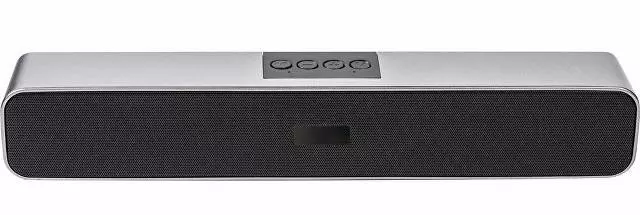
Soundbars designed for stereo output have multiple drivers arranged across the cabinet. The stereo signal is split into left and right channels, and each driver receives its portion to create a wider stereo image. These systems often come with an additional subwoofer for deep bass—perfect for reproducing low frequencies or Batman’s gravelly voice.
Who invented the speaker?
Like many other inventions from the early 20th century, it’s hard to credit just one person with inventing the loudspeaker. The technology evolved over time as scientists and engineers gained a better understanding of sound waves and electrical currents.
Alexander Graham Bell, the famous inventor of the telephone, made significant contributions to audio technology, developing one of the earliest versions of a loudspeaker in the late 19th century. Not long after, Oliver Lodge created the first moving coil speaker. In 1915, Danish engineers Peter L. Jensen and Edwin Pridham patented the electrodynamic speaker, where a coil of wire attached to a diaphragm was placed in a magnetic field.
Across the Atlantic, in 1925, Edward W. Kellogg and Chester W. Rice developed the dynamic loudspeaker with a diaphragm, which was later licensed by RCA. Their design included many elements that form the foundation of modern speaker technology.
So, it’s safe to say that many people contributed to the development of the technology that allows you to enjoy music and movies in high-quality sound today. As with many great inventions, it truly took a village to bring the modern speaker to life!
The Future of Acoustic Systems
Technology is getting smaller and cheaper—that’s a fact. But when it comes to speakers, the core technology has remained practically unchanged since their invention.
In reality, speakers are one of the most inefficient technologies we use today. Over 99% of the energy that goes into a speaker isn’t converted into sound. Most of it is wasted as heat. It’s surprising that the Environmental Protection Agency (EPA) hasn’t banned speakers yet for their poor energy efficiency.
However, the future of speakers could change thanks to a new material discovered in 2004—graphene. This material is incredibly lightweight, meaning it requires much less energy to move back and forth to create sound waves. That’s great news, especially for tweeters, which need such lightweight materials to function efficiently at high frequencies.
If scientists can successfully scale up graphene production and integrate it into commercial products, the speakers of the future could be lighter and far more energy-efficient.
Until then, we’ll have to make do with what we have now—mini space heaters that convert electrical signals into air pressure changes, also known as speakers.


